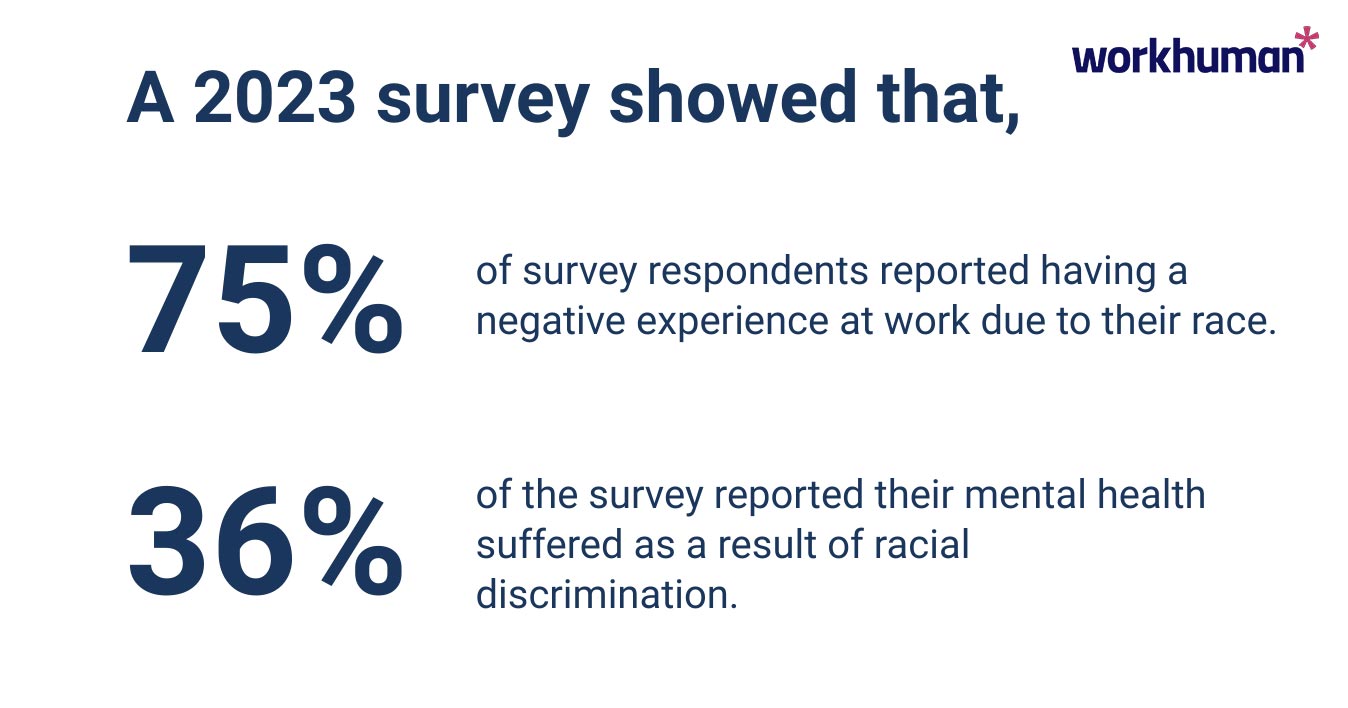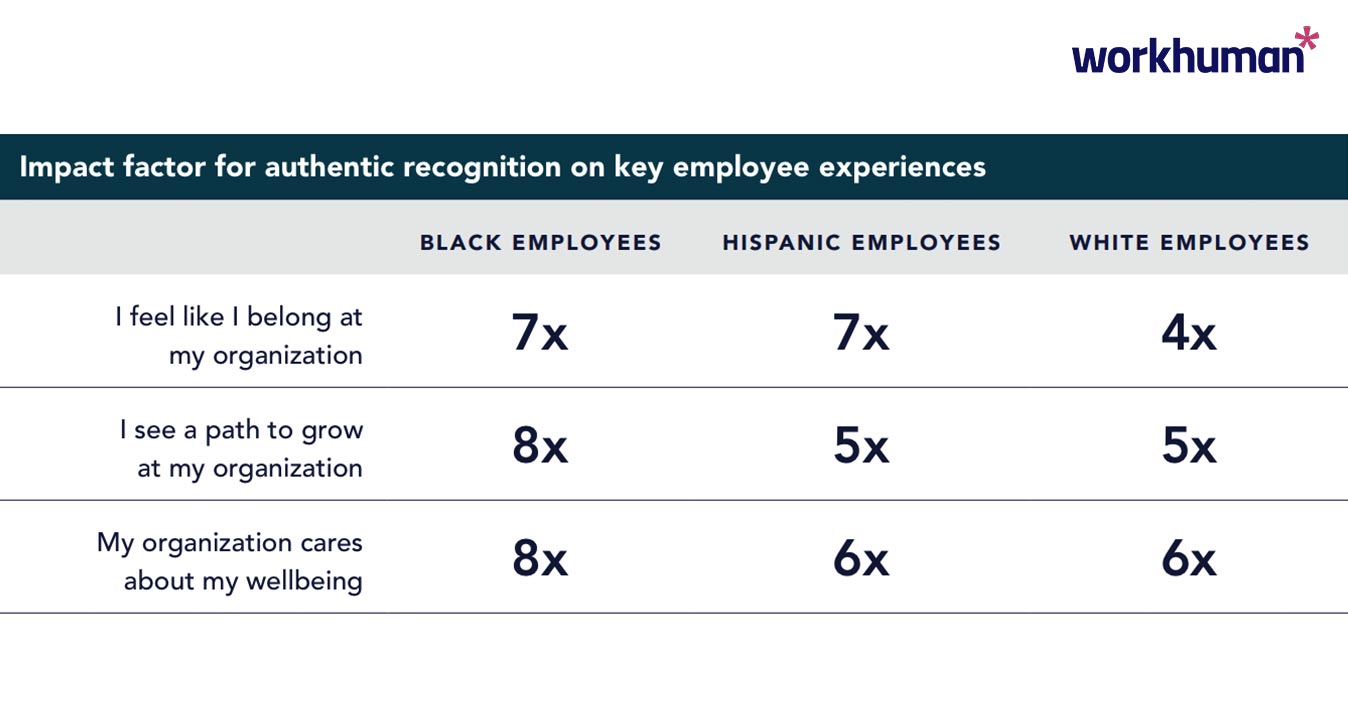Start Closing the Equity Gap with Recognition

Equity plays a massive role at work. It’s not just about equal opportunity – equity emphasizes equal access for all by providing the resources and treatment necessary for success.
And the world of work has a ways to go for equity: A 2021 survey showed that 52% of respondents felt discriminated against for their age, 30% for their gender identity, 29% for their race, 20% for their political views, and 9% for their sexual orientation.
Equity fosters a sense of belonging and connection to an organization – and without it, both employees and organizations alike suffer. An inequitable workplace leads to disengagement, lack of camaraderie, and even poor performance.
But there’s a tool that can help drive a more equitable, connected workplace: employee recognition. Let’s get into it.
Defining equity
Quick definition: Equity is defined as fair treatment, access, and advancement for each person. It differs from equality in that equality means everyone is given the same opportunity, whereas equity solves for differences in access and circumstances to ensure a fairer playing field.
At work, this looks like intentionally advocating for someone from a historically marginalized group, ensuring equal pay across races and genders, making the workplace accessible for all abilities, and more.
How equity impacts the workplace
When you think of discrimination, you might picture outright bias and obvious injustices like racist language or sexist behavior. But it takes shape in subtler and harder-to-trace ways, too, like unconscious bias and outdated HR practices.
Discrimination at work is rampant. In a 2019 survey, one in four respondents said they felt discriminated against at work. The same survey revealed that women in senior and middle management are more likely to have experienced some form of discrimination in the workplace, while men are 2x as likely to be in a senior management or executive role than women.
Black men in the workplace have a particular set of challenges. A 2023 survey showed that 75% of survey respondents reported having a negative experience at work due to their race and 36% of the survey reported their mental health suffered as a result of racial discrimination.

This led nearly half of respondents to say they feel mentally exhausted at the end of the day, with many of them experiencing panic attacks, depression, and a total lack of confidence at work.
Workplace discrimination can look like:
- Feeling your ideas are ignored or passed over in favor of others.’
- Having fewer career advancement opportunities than your white and male colleagues
- Receiving lower pay for the same work compared to other employees
- Assigning work based on identity rather than skills or experience
- Teasing an employee for an accent or other identity-based trait
This sense of inequity doesn’t just impact employees – it impacts the whole workplace. When your employees have a diminished sense of self and lack hope in their career trajectory based on bias, their mental health suffers, which means their performance suffers. It can make the office feel unsafe and have employees walking on eggshells, so to speak.
Due to gender disparity in the workplace, a phenomenon called Queen Bee Syndrome can emerge, wherein a female employee, usually in a position of power often in a male-dominated field, distances themselves and even acts hostile toward other women at work. They can take on a “you owe me” mentality, further driving fellow employees apart as a culture of competition rather than camaraderie takes hold.
That’s not exactly conducive to a sense of thriving or creativity.
One way to combat inequity at work: employee recognition.
How does recognition influence equity?
Employee recognition positively influences psychological safety and makes employees feel safe to be themselves. Employees who strongly agree that they receive the right amount of recognition for the work they do are four times more likely to perceive their workplace as inclusive and seven times more likely to perceive it as equitable compared to those who don’t receive the right amount of recognition.
This correlation stems from the fact that recognition encourages employees to recognize one another not just for their hard work, but also for who they are. Recognizing participation in ERGs (employee resource groups) is a great example.
ERGs exist to give employees some much-needed space to work through workplace and social issues with others who share a key identity. And while employees who participate in ERGs are more engaged in an organization’s culture, they are also more stressed than employees who don’t participate.
If their extra work goes unappreciated, they can feel a sense of resentment and disengagement. Recognition also cultivates a sense of belonging. When doled out authentically, recognition makes Black and Hispanic employees seven times as likely to feel that they belong at their organization.
Authentic appreciation is a key predictor of employee wellbeing. Black and Hispanic employees are particularly attuned to authenticity. Black employees are 79% more likely to be thriving, and Hispanic employees are 69% more likely, when they also strongly agree the recognition they receive is authentic.
Authentic recognition also predicts a greater likelihood of employees seeing a path to grow at the organization, which contributes to a more engaged and loyal culture.

And the role recognition plays in career growth shouldn’t be underestimated either. Women repeatedly cite peer recognition and support from other team members as instrumental to positive experiences at work, particularly for promotion.
On the other hand, when recognition is inadequate or nonexistent, employees can feel almost hopeless about the prospect of a promotion. In a Workhuman survey of Black men in tech, many reported that they don’t believe they have a viable path to the C-Suite. And this isn’t just a feeling – some have never even been promoted.
After one year in a recognition program, Asian, Black, and Hispanic employee turnover dropped 20% and turnover among women fell 17%, according to Workhuman® recognition data across 712,000 employees. That’s a sure sign of a more connected organization.
How to use recognition to improve workplace equity
How can you put recognition into practice to actually move the needle and promote equity in the workplace? Here are some tips.
- Put thought into your recognition. Avoid giving feedback about someone’s personality. Instead, focus on behavior. This shows you value a person’s contributions and actions rather than thanking them for “being nice,” which can come across as shallow and unspecific.
- Give everyone high-quality, actionable feedback so they have equal opportunity to work toward their goals and advance their careers. Workhuman recognition data indicates that women receive awards at a higher rate than men but that the average monetary award amount received by men is 12% higher. Be intentional with your recognition distribution.
- Use recognition to advocate for others. Advocacy is powerful and can make a pivotal difference in an employee’s career. It can elevate workers who might otherwise go unrecognized, which, in turn, leads to more equitable pay practices. Pay equity helps to level the playing field and empower individual success across the organization.
- Analyze recognition data to promote equity. Recognition platforms don’t just enable the ability to give recognition – they also aggregate valuable data on who is giving recognition, who’s receiving it, when, where, and why. This is powerful information that can indicate any potential disparity in appreciation – then it’s up to you to act on it.
- Watch your language. Unconscious bias appears in positive, affirming language like recognition as much as it does in criticism. Workhuman Inclusion Advisor identifies and mitigates bias in real time with AI by flagging it as it’s written, offering a quick analysis of how it might be biased or harmful, and offering simple changes to make it more equitable.
Workhuman Cloud® has the first and only proactive, real-time DE&I solution focused on in-the-moment coaching and behavioral change. Combined with the power of employee recognition, the platform has the power to amplify voices across the organization and promote equity by offering visibility into achievements by historically overlooked employee groups.
Consider how employee recognition might transform your organization. From lower turnover and higher engagement to more fulfilled employees and thriving teams, it has real potential to elevate your whole company and make it an exemplary place to work.